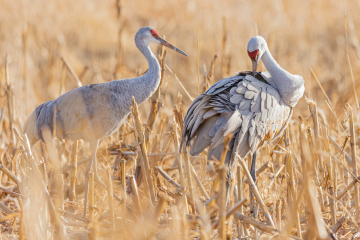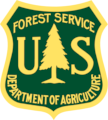Making Good Use Of The Land
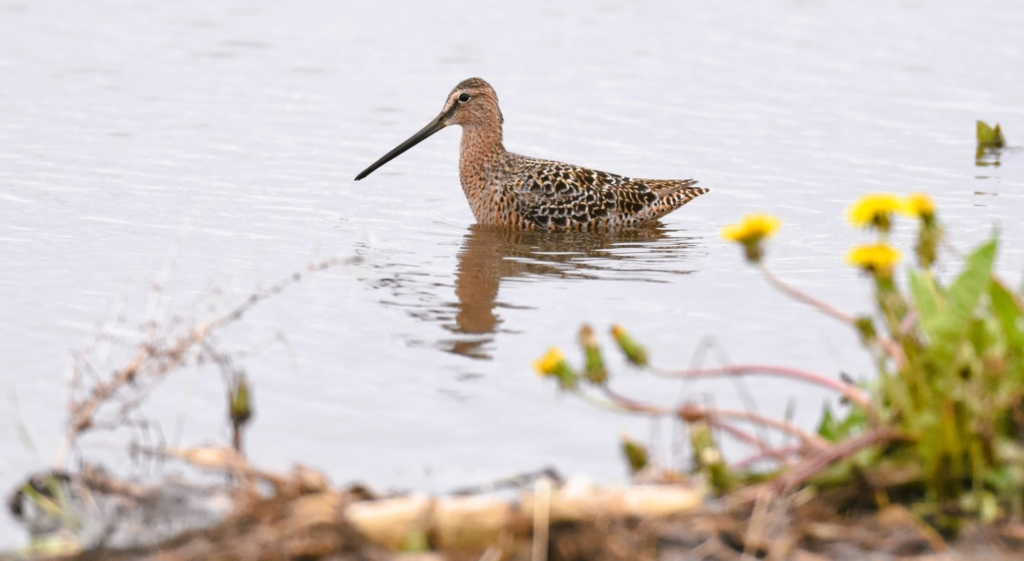
By Steve Moseley/RWBJV
Nick and Ryan Happold, who operate a row crop and cattle operation east and south of Doniphan, had a combined 58 acres between them that, historically, has been underwhelming for corn production.
There’s more than one way to turn a profit on marginal farm ground and the Happold brothers have found theirs.
The low spot, said Nick, who spoke for the brothers during a recent interview alongside the wet ground, would often flood out – despite a large concentration pit, since filled in - and fail to produce anything most years. In rare years when it made a harvestable crop, yields were limited. Income was sketchy to say the least as annual input costs for fuel, fertilizer and tractor time went down a rat hole.
“Even nitrogen didn’t help much,” Happold said.
But no longer.
The brothers worked with Natural Resources Conservation Service and numerous cooperating agencies and active partners of the Rainwater Basin Joint Venture to take a step back. A step toward a return to nature--and profitability.
Happold said the project idea grew from seeds of what they saw with their own eyes and things they heard from neighbors who had completed similar projects.
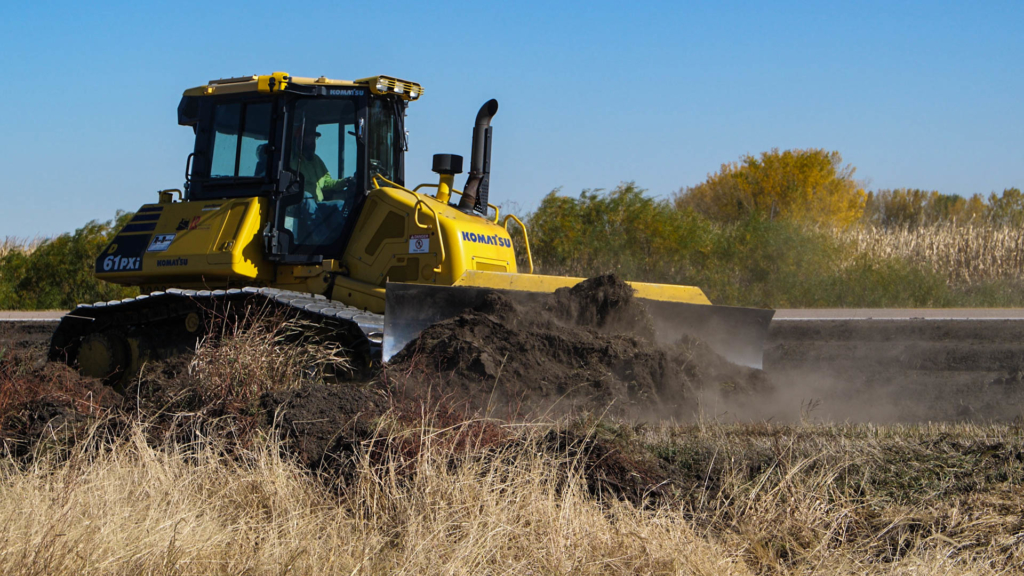 The need was apparent he said, because “only a couple years in 10 did we get a crop” which added up to a frustratingly negative Return on Investment - ROI. “If it didn’t flood on a yearly basis, it was kind of surprising,” he acknowledged.
The need was apparent he said, because “only a couple years in 10 did we get a crop” which added up to a frustratingly negative Return on Investment - ROI. “If it didn’t flood on a yearly basis, it was kind of surprising,” he acknowledged.
Enter the wetland specialists of the Natural Resources Conservation Service and Joint Venture where substantial cost-share dollars and, of equal importance, scientific habitat expertise is available.
Working together, the farmers and their new-found associates have solved a host of problems while affecting real change.
The wetland is now bordered by a stout barbed-wire fence. The power lines overhead are fitted with small, shiny warning devices that move with the wind to help birds, primarily cranes, avoid fatal crashes as they enter and leave the habitat.
As the accompanying panoramic photo illustrates, recent heavy rains in excess of three inches created more of a small lake than a wetland, however Happold knows it will dry in time: That’s when the operational advantage will kick in.
The brothers retain full ownership of the acres that were enrolled in the conservation easement. They are permitted, even encouraged, to graze cattle there at least part of the year, which in turn enhances habitat values for the birds it attracts.
A custom seed blend has been planted including grass varieties favorable to grazing and others designed to grow in both wet and dry times. These species drop their seeds to the ground after the growing season, and in turn provide a banquet for waterfowl and shore birds in spring when the ground is flooded.
Happold is especially pleased to have a new solar well.
“That would have been prohibitive” for the brothers to fund by themselves, he said. “We won’t have to haul water to the cows. We can get those cow-calf pairs out of our lot and put them out here.”
Now the former problem child is essentially a hands-off farm asset that demands little expense or time.
“They paid for a good share” of the improvements, he said of the program, “to pretty much do everything.”
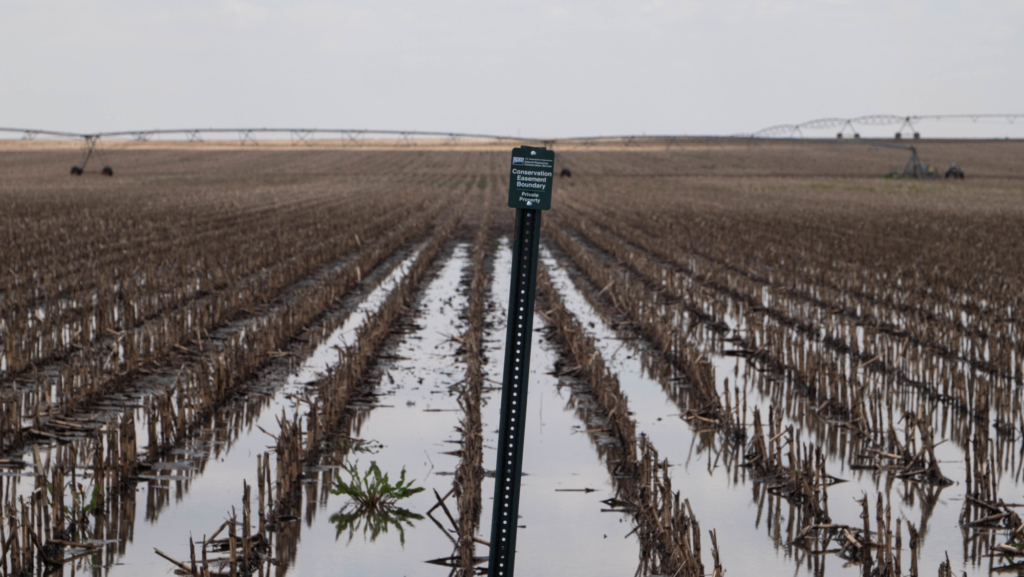 As for advice to fellow ag producers, he said, “Taking acres out of production is something you need to weigh. Look at your options” he suggests, and also “at your ROI. Maybe it’s something you need to look at.”
As for advice to fellow ag producers, he said, “Taking acres out of production is something you need to weigh. Look at your options” he suggests, and also “at your ROI. Maybe it’s something you need to look at.”
A happy side benefit? Happold said it “lowers property taxes, too, going to this type of production” from rows of corn.
Looking back, he admitted “it’s been quite a challenge at times” mostly because “we have never done it before,” he said, adding with a chuckle “there are things we wished we knew” from the outset.
The chuckle was remembering a significant check from someplace he’d never heard of that was headed for the junk mail pile, which is what the envelope appeared to be until he peeked inside.
“The best part of all is seeing it go back to the way Mother Nature intended,” He said. The arrival of waterfowl and pheasants, his favorite game bird as a lifelong hunter, is exciting.
Why go to the trouble?
Because of “the benefit to me,” he said, and the benefit to nature itself.
“Look into it, it’s worthwhile,” he counsels his peers. “It might look like it doesn’t benefit you, but it does.”
As for his beloved pheasants, arguably once Nebraska’s most prized and abundant upland species statewide, his feelings are evident: “It’s so sad to see this bird population almost decimated. To bring that back is near and dear to me. We’re seeing birds almost year-round now, as long as it has water.”
A wealth of information about the many specialized programs available to help ag producers solve problems while simultaneously accomplishing great things for nature can be accessed through the resource professionals at Natural Resources Conservation Service 308-392-3526 or the Rainwater Basin Joint Venture office in Grand Island at (308) 380-8691.

